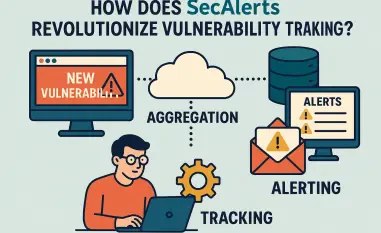In the murky underworld of cyber espionage, few adversaries match the cunning and relentless adaptability of ColdRiver, a Russia-linked advanced persistent threat (APT) group also recognized as UNC4057, Star Blizzard, and Callisto. With a history of targeting high-value entities such as NATO governments, former diplomats, and influential non-governmental organization (NGO) leaders, ColdRiver has once again raised the stakes with a sophisticated new campaign. Insights from Google’s Threat Intelligence Group (GTIG) reveal the group’s ability to reinvent their malicious tools at lightning speed when exposed, painting a vivid picture of the escalating challenges cybersecurity defenders face in combating state-backed threats. As tactics evolve and attacks intensify, understanding ColdRiver’s latest maneuvers becomes critical for organizations aiming to safeguard sensitive information from such persistent adversaries.
Inside ColdRiver’s Aggressive Evolution
Swift Retooling After Exposure
ColdRiver’s operational agility is on full display with their response to public exposure by GTIG. Within a mere five days of the LOSTKEYS malware platform being revealed in May, the group completely abandoned it and introduced a new set of tools. Described by GTIG researcher Wesley Shields as the most aggressive campaign to date, this rapid shift underscores ColdRiver’s capacity to stay ahead of defenders. Their new toolkit centers on NOROBOT, a malware downloader that employs deceptive lures like fake CAPTCHA prompts to trick users into executing harmful files. By connecting to a hardcoded command-and-control (C2) server, NOROBOT retrieves additional payloads, paving the way for deeper system compromise. This swift pivot not only highlights their technical adaptability but also their determination to maintain offensive momentum despite setbacks, posing a significant hurdle for security teams trying to predict and block their next moves.
Refining Tools for Maximum Impact
Following the initial rollout of NOROBOT, ColdRiver wasted no time in iterating their arsenal to enhance effectiveness. Early versions facilitated the deployment of YESROBOT, a Python-based backdoor reliant on a full Python 3.8 environment, which proved cumbersome for attackers and detectable by defenders. Recognizing these limitations, the group phased it out by June, replacing it with MAYBEROBOT, a streamlined PowerShell-based backdoor. This newer tool offers lightweight, persistent remote control, enabling command execution and further payload downloads with greater stealth. ColdRiver’s continuous experimentation with infection chains—sometimes simplifying for success, other times adding complexity to evade detection—demonstrates a calculated approach. This relentless refinement ensures that their malware remains a moving target, challenging cybersecurity measures to keep pace with an adversary that learns and adapts with each disruption.
Implications for Global Cybersecurity
Countering a Dynamic Threat Landscape
The speed at which ColdRiver adapts after exposure serves as a stark reminder of the evolving nature of cyber threats. Whether their shift to new malware aims to extract more data from compromised systems or simply test innovative tools remains unclear, but their agility is undeniable. For enterprises, this necessitates a proactive defense strategy that layers technical safeguards with robust user education. Social engineering tactics, like the fake CAPTCHA prompts used by NOROBOT, exploit human vulnerabilities that firewalls and antivirus software cannot fully address. Organizations must prioritize training to help employees recognize and resist such deceptive ploys. Without a comprehensive approach that combines technology and awareness, defenders risk falling behind adversaries who seamlessly pivot to exploit the weakest links in security chains, amplifying the potential for significant breaches.
Harnessing Shared Intelligence
In response to ColdRiver’s escalating campaigns, Google has taken a crucial step by releasing indicators of compromise (IOCs) and YARA rules to assist organizations in detecting and mitigating these threats. Such resources are indispensable for bolstering defenses, as they provide actionable insights into the group’s tactics and infrastructure. The importance of threat intelligence sharing within the cybersecurity community cannot be overstated, as it fosters a collaborative front against sophisticated actors. Enterprises leveraging these tools gain a better chance of identifying malicious activity before it escalates into a full-blown compromise. As ColdRiver continues to refine its methods, staying informed through shared knowledge and integrating these defensive measures into security protocols becomes a vital strategy for anticipating and neutralizing risks posed by agile APT groups in an increasingly complex digital landscape.
Persistent Focus on Strategic Targets
Zeroing in on Sensitive Intelligence
ColdRiver’s choice of targets reveals a deliberate and strategic agenda aimed at harvesting critical information. Their focus remains steadfast on high-value entities such as NATO governments, diplomats, and prominent NGO leaders, reflecting an intent to access sensitive geopolitical and organizational intelligence. This consistent targeting, even in the face of disruptions by security researchers, illustrates a long-term commitment to espionage objectives. Each campaign builds on previous efforts, with the group refining methods to ensure sustained access to valuable data. For the entities in ColdRiver’s crosshairs, this persistence signals an urgent need for heightened vigilance and fortified defenses, as the stakes of a successful breach could have far-reaching implications for national security and international relations.
Navigating Between Stealth and Success
The group’s ongoing adjustments to NOROBOT’s infection chain highlight a nuanced balance between operational impact and evasion. At times, ColdRiver simplifies the process to boost infection rates, ensuring more systems fall prey to their malware. In other instances, they introduce layers of complexity to thwart detection by security tools, prioritizing stealth over immediate gains. This dynamic strategy keeps defenders guessing, as the group continuously tweaks its approach to penetrate even the most guarded environments. Such adaptability underscores the challenge of crafting static defenses against an adversary that evolves with each encounter. For cybersecurity professionals, understanding this interplay between success and stealth is essential to developing responsive measures that can disrupt ColdRiver’s campaigns before they achieve their ultimate goals of intelligence extraction.
Strengthening Defenses Against Future Threats
Reflecting on a Formidable Challenge
Looking back, ColdRiver’s latest campaign marked a significant chapter in the ongoing battle against cyber espionage. The group’s ability to abandon outdated tools like LOSTKEYS and deploy sophisticated alternatives such as NOROBOT and MAYBEROBOT within days showcased their resilience. Their persistent targeting of high-profile entities and reliance on deceptive tactics like fake CAPTCHA prompts exposed critical vulnerabilities in both technical and human defenses. Despite operational security lapses that allowed researchers to track their infrastructure, ColdRiver’s determination to innovate after each disruption painted a sobering picture of the evolving threat landscape. This relentless drive to adapt and strike again underscored the difficulty of staying ahead of state-backed actors with deep resources and strategic focus.
Building a Resilient Future
Moving forward, the cybersecurity community must prioritize actionable steps to counter such agile adversaries. Enterprises should integrate shared threat intelligence, like the IOCs and YARA rules provided by GTIG, into their security frameworks to enhance detection capabilities. Simultaneously, investing in comprehensive user training programs can mitigate the risk of social engineering attacks that ColdRiver expertly exploits. Collaboration across industries and with research groups will be key to anticipating future tactics and disrupting campaigns before they escalate. By fostering a culture of continuous improvement and vigilance, organizations can better prepare for the next wave of sophisticated threats, ensuring that defenses evolve as rapidly as the adversaries they aim to thwart. The fight against groups like ColdRiver demands nothing less than a united and forward-thinking approach.













